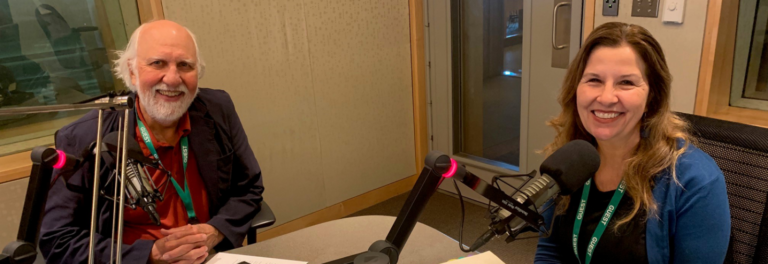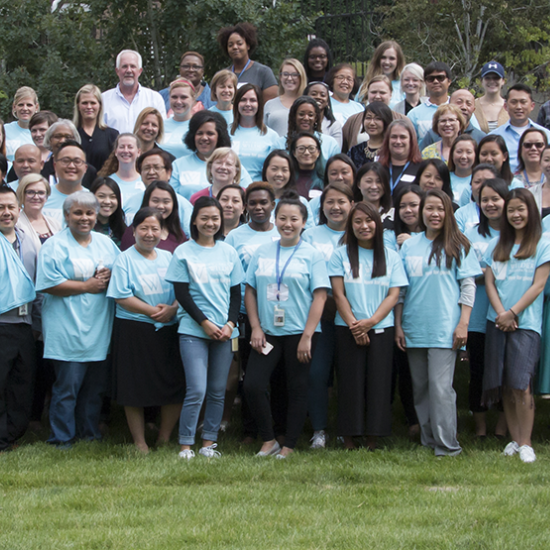Q: What do you call a social worker who manages the social media pages for a non-profit? A: Care coordinator of the Amherst H. Wilder Foundation’s Caregiver Services Program!
It doesn’t seem like a role for a care coordinator; however, in a non-profit, when budgets are tight and staff is limited, the types of responsibilities seem endless! Wilder’s Caregiver Services, a team of 5 professionals, with backgrounds in social services and non-profit services launched into social media, to start and manage Facebook & Twitter pages and a blog schedule.
My only experience on social media was my personal Facebook page where I randomly re-posted things; no strategy behind my posts. I had no idea there were strategies! And Twitter…I had heard of Twitter, but what was the point of it? Blogs…I heard of them, but couldn’t explain what they were and had no experience writing one. I had no experience in this area, was feeling a bit in over my head, but eager to learn.
Why did Wilder’s Caregiver Services team decide to take the plunge to social media? According to a study by the Pew Research Center 88 percent of caregivers look online for health information. In response, Wilder realized that we needed to engage caregivers more online to:
- Increase awareness and access to our services.
- Provide resources and emotional support to caregivers online.
- Demonstrate Wilder’s leadership and expertise.
Wilder contracted with Fast Horse to co-develop our social media strategy. A Fast Horse consultant, Jamie Millard, (now with Pollen), taught us about Facebook and Twitter editorial calendars and blog schedules. We learned about specific “moods” we wanted our audience to feel: Nurtured, Inspired, and Informed. It is important to keep things fresh and exciting, have a good mix of content and know howto post that content. Content categories include: “Inspiring quote/image,” “Self-promotional,” “Resource Link,” “Highlight Programs,” “Free for all.”
The editorial calendars were a structured guide on what to post to convey a mood, and the method in which it is posted. I.e. Is there a photo or video attached, sharing a post from another user adding your own comments, etc. I used my guides closely for the first three months, until I had a sense of content and how to create the meaningful post. Sharing MY experience with social media is important so YOU will feel empowered to do it too!
WilderCaregiverCommunity Facebook Page
- Purpose: provide emotional support and resources for unpaid family and friend caregivers of older adults so they know where to turn when they need support.
- Deep sentiment of feeling and “pulling at people’s heartstrings” are the types of posts that are usually successful.
- Be mindful of your organization’s policy on copyright laws when posting photos found on other platforms i.e. Pintrest, Flickr. It is important to give credit to photographers of photos and other content found. Sharing directly from the source is acceptable versus copying and pasting the URL link into the “status update” box.
- Use of websites and applications as a platform to create our own backgrounds for phrases and flyers i.e. Quozio and Snagit can be helpful.
- Find out when your audience is online: Majority of our Facebook audience is online between 7-9 pm.
- A volunteer assists with creating posts to promote classes and events.
- Purpose: to engage with other professionals and organizations for increased awareness of services and supports available to unpaid family and friend caregivers of older adults.
- Listen to and learn the “language.” Know how to use hashtags, usernames of people to engage with, influencers, lists, live tweeting, and retweeting.
- Participate in Tweet chats; live tweet sessions around a specific topic. A host that posts different questions on a topic participants can share thoughts and resources.Live Tweeting at conferences and specific events is another layer of networking.
- Purpose: to share stories, frustrations and triumphs of caregivers.
- Hold brainstorming sessions for blogging topics and best suited authors.
- Keep a good balance between staff bloggers and invited guest bloggers.
- Sharing blogs on our other social media platforms.
As you can see, care coordinators, social workers, and nonprofit professions can manage social media. With a little bit of courage, and work, you can do it too! Visit our Caregiving Resource Center for a toolkit to get your non-profit organization started on social media today!
Sarah Lahr, LSW is the Care Coordinator of the Wilder Foundation’s Caregiver Services Program and co-presenter of “Facebook and Twitter: Staying Sane with Social Media” at the Aging & Disability Odyssey 2015 Conference in Duluth, June 15 – 16, 2015.




